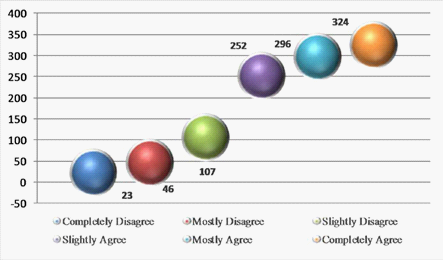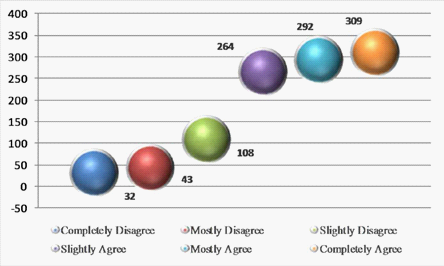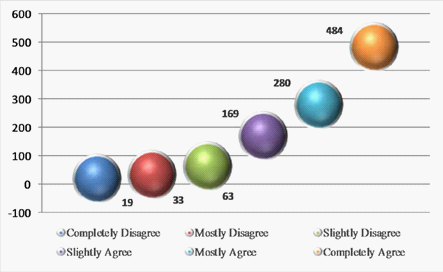Abstract
Media can be a useful tool when we talk about sketching a few options on the socio-educational domain. Whether we are talking about career opportunities or some analyzes of the most popular or profitable areas where it is better to pursue your studies, media can be a student’s help for his/her orientation in the career. Along with the boom of the on-line sites, the audience target has the opportunity to be better informed than before the on-line era, due to the fact that nowadays, the press has sampled a release - which is also a good thing and a bad thing, but we will not discuss this here - and now it is easier to approach topics that are not necessarily newsworthy, like it happens in a radio news bulletin or in a newspaper. When we talk about the opportunities offered by the on-line media, we talk about a huge amount of information, but with the disadvantage of having to be sorted. This is one of the weakest points of the on-line media. This paper tries to analyze the weaknesses and the strengths of the on-line media, taking also into consideration the results of a questionnaire applied to more than one thousand students from secondary education, related to the opportunities they could see and find in the information delivered in different journalistic environments.
Keywords: mass-mediaon-line mediamedia educationstudents’ career opportunitiesstudents’ feedbackPROFILES Project
1. Introduction
The on-line media is the last type of media which appeared at the end of the ’90, after the
newspaper, radio and television. Although it is the last one that appeared, it did not replace the other
types of media, instead they became complementary.
In the last years, the Internet brought mass-media to an unprecedented feature, marked mainly by
decentralization. This happened due to the fact that everyone could be his/her own leader; have his/her
own editorial policy etc. In this sense, the on-line media represents a specific type of media because it
can gather all the characteristics of general media like: instantaneity, archiving possibility, interactivity.
The major advantage is that the edition cannot close; the journalist can upgrade an article anytime, can
receive new information and can offer to the readers almost live events. The on-line media permits
photos, videos, links to another article, comments etc. Therefore, we can call on-line media as versatile
and easily adaptable.
If it is to talk about the advantages and disadvantages of the on-line media, we can say that the
strengths are instantaneity, unlimited depth, hypertext navigation and richness of media: images,
videos, text and animation. Regarding the weaknesses, we can point the necessity of having some
knowledge about the technology, the possibility of spreading false news, the necessity of possessing
several instruments like computer, electricity, internet connection. (Agnès, 2011)
The specialists talk about a new way of writing for the on-line media. Yves Agnès talks about 11
rules that an on-line journalist must obey. Those include compulsory re-reading - because in on-line,
the publishing is made immediately, in contrast to the written media where a person checks the text
before publishing -, strong hierarchy of information, choosing some strong angles of approach - due to
the fact that the on-line reader has a limited time and wants to know a precise information, presenting
from the beginning the essential information caused by the same time pressure - and of course, there
can be mentioned other characteristics specific to the on-line media. It is important for a journalist who
has chosen to write in on-line settings, to know that a single article should not exceed three screen-
pages (that means 1000-1500 signs), because even a passionate reader has limits, the attention in on-
line is less present than the attention “on paper”.
Like in the newspapers, the on-line sites must pay attention to the page layout. A site does not have
to be overloaded, because the on-line reader has a very short time to assimilate information and that is
why the articles have to be correctly spelled, accurately, in short sentences, and with a strong hierarchy
of information.
It is clear that when we talk about information and communication, we talk about mass-media. The
two concepts are in the same measure interconnected, but also independent. Gathering information, but
also the way a journalist knows how to communicate that information, are related to the flair of the
journalist, and to the proper educational background. It can be said that journalist is a vocational
profession.
When we talk about mass-media, we talk about an intra-European space, but also an inter-
continental space. What we want to highlight is the fact that information and its dissemination at a
European level has become a habit, nowadays. Due to the communication, the intercultural, inter-
educational and inter-political relations have been facilitated. In the following paragraphs, we stop at
the educational opportunities offered to the Romanian students through mass-media and the way they
manage to plan their professional future based on the information received in on-line media.
Looking from the reader perspective, by sure, we can found him/her in the process of searching of
the information. Not for nothing, the prime role of the press is to inform. Therefore, the journalist’s
task is to seek the most wanted information from the plurality of daily facts and deliver it to the target
public. Of course, that a reader, let’s say a student or a pupil, can be caught in a trap determined by the
multitude of information. Nowadays, we face a big risk caused by the multitude of information that
does not require the pupil / student to sort this information - that is why the collaboration with a teacher
is mandatory. This is maybe the biggest problem that a student faces when we talk about the
information picked from on-line mass-media and that is why the teacher’s role becomes bigger.
Another problem awakened by the on-line media is the higher possibility to plagiarize, to copy - as
there are many sites that offer to the student easy access to unverified information for a small amount
of money, or even for free. A deeper problem that a society faces because of the on-line media is the
student’s loss of capacity to understand. We talk about individuals easy to manipulate, it comes into
play the law of minimum effort and that it is not stimulated the creativity capacity of the student, all
that because of the big amount of information that a student can access too easy.
2. On-line media as an important factor that shape the students’ future careers
For a young person, the projection of its own career represents an important issue. But the career
choice is strongly influenced by a combination of several factors, the main ones being: parents,
individual interest and media (Saleem, et al., 2014). So, even media (and especially on-media) is
indicated having too many negative aspects on different levels referring to its influence to young
generation, but it is not hard to find also some positive aspects - the ones that make media essential on
finding needed and accurate information. In particular, it can be expressed the case of one young
student who want to search information related to some possible jobs, necessary conditions for that
specific job, or lines related to a possible career. Here, it can be said that local and regional mass-media
call into the frontline aspects related to labour market. In this respect, we can offer a series of examples
(articles) taken from the on-line daily journal “
journal in Dâmbovița County. We have noticed a series of articles (published in the first part of the
year) which can be found in a simple process of searching of the following keywords:
opportunities and job conditions:
1) Dâmbovița: 12.000 unemployed people and only 200 jobs at A.J.O.F.M. Dâmbovița;
(“Dâmbovița: Peste 12.000 de șomeri”, 2016)
2) Jobs available at S.C. Livas Clothing S.R.L. Târgoviște. See the details!; (“Locuri de muncă
disponibile”, 2016)
3)
4) Jobs through EURES, available abroad. See the offer!; (“Locuri de muncă”, 2016)
5) Vacant position of consultant at Târgoviște City Hall. See the conditions of employment!; (“Post
vacant de consilier”, 2016)
6) I.P.J. Dâmbovița hires from external source. See the conditions of employment!; (“IPJ Dâmboviţa
angajează”, 2016)
7) 20 candidates per seat. Queues at I.P.J. Dâmbovița; (“20 de candidaţi”, 2016)
8) C.A.S. Dâmbovița hires spokesman and two counselors for relationships with suppliers; (“CAS
Dâmbovița angajează”, 2016)
9)
10) Târgoviște Company hires human resources manager; (“Societate târgovişteană angajează”,
2016)
11) CONTEST: The penitentiaries in the county employ 30 people from external source;
(“CONCURS: Penitenciarele din judeţ”, 2016)
12) Vacancies at County Public Service Rescue - Salvaspeo Dâmbovița. (“Posturi libere la
Serviciul”, 2016)
From reading the articles mentioned above, we can observe that almost every one of them provide
information about what are the conditions required by every job, like: needed studies, competition
calendar, venue of examination, place or contact where it can be found more information about the job
or the conditions of the job. In addition, there can be found - but not in all the articles - the benefits that
are offered if somebody get employed, or the imposed conditions for not accessing the job. Reading the
content of the articles, it comes obvious that young people could be influenced by the media, in a kind
of orientation concerning the figure career. It can be said that on-line media has an important role on
shaping the future career of a young person.
3. Results and discussion
Young generation is strongly attached to on-line media, mostly in the actual situation, when the
society is changing due to the media exposure, people becoming very influenced by the media
(Apostol, & Näsi, 2013). But taking into account the important number of posts in the on-line media,
related to job opportunities, could we find out if the Romanian young generation has an interest
concerning that issue? So, in this context, we framed a question which appeared as a natural one:
large is the students’ interest for their future profession? The analysis was based on the answers of a
questionnaire addressed to 1048 secondary school students. Near the question concerning if they use
on-line media in order to get information related to jobs and careers, where all the surveyed students
offered an affirmative answer, 4 major items were introduced regarding their interest for their future
career, the answers being scaled in a sequence: “
disagree / slightly agree / mostly agree / completely agree”:
1) I want to be informed about what does the occupations / professions require;
2) I want to know the main tasks assigned to occupations / professions that require formal training;
3) I want to know what qualifications are required in various occupations / professions;
4) I want to know what are my options regarding the career.
The students’ feedback is expressed in figures
students have strong preoccupations related to their careers, being interested in several aspects
concerning occupations / professions and job market.


The actual on-line media illustrates various details about the available jobs in the market. More than
that, it seems that in the press articles, the journalists are concerned to provide more predetermined
information like: conditions required by a specific job or expectations of the society from a graduate,
taking into account the possibility to be employed in a specific area. But information like what are the
career options for a young student, or what differences are between men and women in a clear career
field can be found only in press reportages and investigations, rarely encountered in daily press.

Distribution of students’ answers regarding their will to know what are their options regarding the career
4. Conclusions
Even though the on-line media is the last one that appeared at the end of the ’90 we can say
undoubtedly that it is the most read type of media because it is available for each reader in every
moment of the day, considering the fact that in Romania over 44% of the people who live in the rural
areas and over 70% of the people who live in the urban areas are connected to the Internet, according to
a study of the Romanian Audit Bureau Transmedia (“BRAT: În România”, 2015), in 2015. Romanian
people have Internet connection on smart-phones, laptops, tablets or PC, so everyone who is interested
can be connected in every moment of the day.
If we talk about students or pupils, we may understand that the media information plays a big role
in responding to their demands on career, because the media provides the most punctual information
about job opportunities, job conditions and requirements, main tasks assigned to jobs etc.
Of course, that the media has also some weak points as the lack of depth of the articles seeing that
details like what are the career options for a young student, or what differences are between men and
women in the career field. But media must be seen as a “necessary evil”. Of course, there are some bad
things that media provides, but with a correct initiation of our students, they can enjoy all the benefits it
offers. The on-line media is a good support for the students who want to understand how the labor
market does work, what can be their career opportunities and what the society expects from them. The
on-line media can be an accurate informer as long as you know what to search and how to distinguish
real information from the fake one.
Acknowledgements
This work was funded through the Seventh Framework Programme “
References
- 20 de candidaţi pe un loc! Cozi la Inspectoratul de Poliţie Dâmboviţa pentru angajare. (April 6, 2016). Retrieved from http://www.gazetadambovitei.ro/top-stiri/20-de-candidati-pe-un-loc-cozi-la-inspectoratul-de-politiedambovita-pentru-angajare/ Agnès, Y. (2011). Introducere în journalism. București: Polirom.
- Apostol, O., & Näsi, S. (2013). Firm-employee relationships from a social responsibility perspective: Developments from communist thinking to market ideology in Romania. A mass media story. Journal of Business Ethics, 112(4), 1-15.
- BRAT: În România - 8,8 milioane de utilizatori de internet; 6,5 milioane de români sunt zilnic online. (December 14, 2015). Retrieved from http://www.agerpres.ro/sci-tech/2015/12/14/brat-in-romania-8-8-milioane-deutilizatori-de-internet-6-5-milioane-de-romani-sunt-zilnic-online-12-35-24 CAS Dâmbovița angajează purtător de cuvânt şi doi consilieri pentru relaţia cu furnizorii. (April 11, 2016).
- Retrieved from http://www.gazetadambovitei.ro/social/cas-dambovita-angajeaza-purtator-de-cuvant-si-doiconsilieri-pentru-relatia-cu-furnizorii/ CONCURS: Penitenciarele din judeţ angajează 30 de persoane din sursă externă. (March 23, 2016). Retrieved from http://www.gazetadambovitei.ro/social/concurs-penitenciarele-din-judet-angajeaza-30-de-persoane-dinsursa-externa/ Dâmbovița: Peste 12.000 de șomeri și 200 de locuri de muncă înregistrate la AJOFM. (March 9, 2016). Retrieved from http://www.gazetadambovitei.ro/top-stiri/dambovita-peste-12-000-de-someri-si-200-de-locuri-de-muncainregistrate-la-ajofm/ IPJ Dâmboviţa angajează din sursă externă! Vezi posturile şi cerinţele pentru angajare. (April 1, 2016). Retrieved http://www.gazetadambovitei.ro/actual/ipj-dambovita-angajeaza-din-sursa-externa-vezi-posturile-sifrom cerintele-pentru-angajare/ Locuri de muncă disponibile la SC Livas Clothing SRL Târgovişte! Vezi detalii. (March 15, 2016). Retrieved from http://www.gazetadambovitei.ro/social/locuri-de-munca-disponibile-la-sc-livas-clothing-srl-targoviste-vezidetalii/ Locuri de muncă prin rețeaua Eures, în străinătate. Vezi oferta. (March 28, 2016). Retrieved from http://www.gazetadambovitei.ro/top-stiri/locuri-de-munca-prin-reteaua-eures-in-strainatate-vezi-oferta/ Peste 180 de locuri de muncă, disponibile pentru dâmbovițeni. (March 21, 2016). Retrieved from http://www.gazetadambovitei.ro/social/peste-180-de-locuri-de-munca-disponibile-pentru-damboviteni/ Post vacant de consilier la Primăria Târgovişte! Vezi criteriile de angajare. (March 28, 2016). Retrieved from http://www.gazetadambovitei.ro/top-stiri/post-vacant-de-consilier-la-primaria-targoviste-vezi-criteriile-deangajare/ Posturi disponibile la Grădina Zoologică Târgoviște. (April 4, 2016). Retrieved from http://www.gazetadambovitei.ro/top-stiri/posturi-disponibile-la-gradina-zoologica-targoviste/
- Posturi libere la Serviciul Public Judeţean Salvamont – Salvaspeo Dâmboviţa. (March 22, 2016). Retrieved from http://www.gazetadambovitei.ro/top-stiri/posturi-libere-la-serviciul-public-judetean-salvamont-salvaspeodambovita/ Saleem, N., Hanan, M.A., Saleem, I., & Shamshad, R.M. (2014). Career Selection: Role of Parent’s Profession, Mass Media and Personal Choice. Bulletin of Education and Research, 36(2), 25-37.
- Societate târgovişteană angajează manager resurse umane. (March 30, 2016). Retrieved from http://www.gazetadambovitei.ro/top-stiri/societate-targovisteana-angajeaza-manager-resurse-umane/
Copyright information

This work is licensed under a Creative Commons Attribution-NonCommercial-NoDerivatives 4.0 International License.
About this article
Publication Date
04 October 2016
Article Doi
eBook ISBN
978-1-80296-014-3
Publisher
Future Academy
Volume
15
Print ISBN (optional)
-
Edition Number
1st Edition
Pages
1-1115
Subjects
Communication, communication studies, social interaction, moral purpose of education, social purpose of education
Cite this article as:
Gorghiu, G., Dinu, C., & Cristea, G. C. (2016). The Role of Journalistic Information on Shaping the Student’s Future Career. In A. Sandu, T. Ciulei, & A. Frunza (Eds.), Logos Universality Mentality Education Novelty, vol 15. European Proceedings of Social and Behavioural Sciences (pp. 428-435). Future Academy. https://doi.org/10.15405/epsbs.2016.09.55

